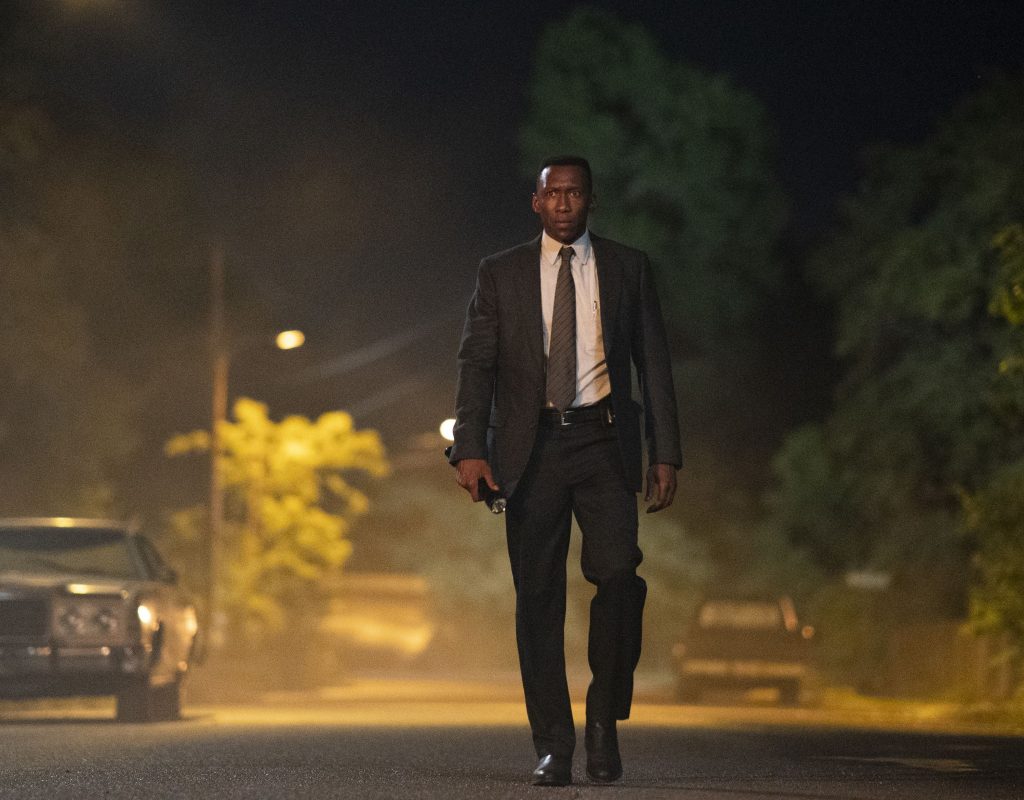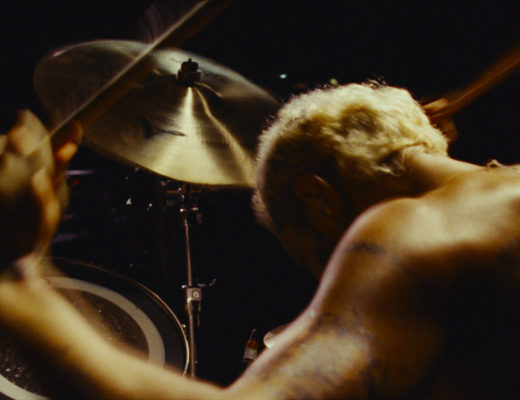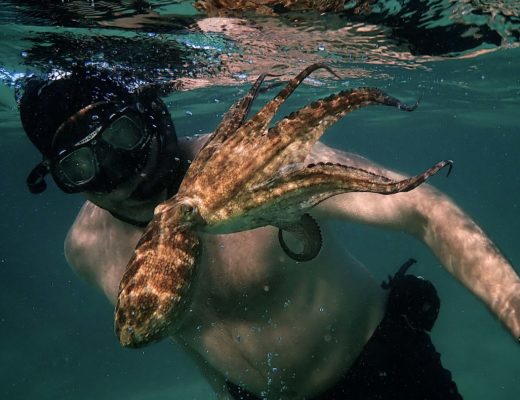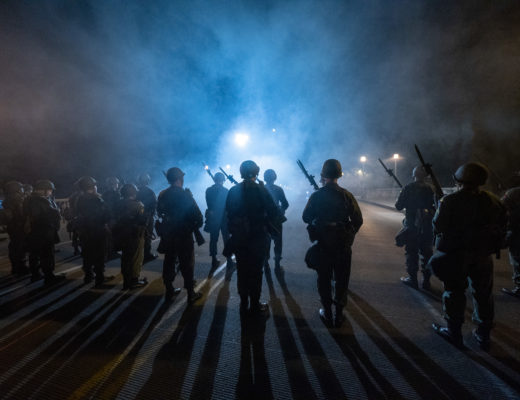Leo Trombetta, ACE won an ACE Eddie in 2008 for the mini-series, The Half-Life of Timofey Berezin. In 2010 he won an Emmy for the mini-series, Temple Grandin. He also has Emmy nominations for Mad Men, Narcos and True Detective. His other work includes Roswell, Cold Case, Carnivale, Big Love, and features Parkland, Blackhat (additional editing), An Ordinary Man, and City of Lies.
I spoke to Leo in an earlier Art of the Cut about his career before he was featured in at Manhattan Editing Workshop’s Sight, Sound and Story series. In this interview we focus on his work on the third season of HBO’s True Detective.
(This interview was transcribed with SpeedScriber. Thanks to Martin Baker at Digital Heaven)
https://www.youtube.com/watch?v=c7maFd-2dZ8
HULLFISH: So you’ve been working on True Detective.
TROMBETTA: Yes. I did all eight episodes.
HULLFISH: Isn’t that unusual for one editor to work on an entire season solo?
TROMBETTA: It is. I think it’s been done before. I know The Night Of there were two editors but one editor did the first episode and another editor did the remaining. It’s definitely unusual. How it started was: I got a call from Laurie Slonka who was the post supervisor on The Night Of and she was the post supervisor on True Detective and she called me about doing the show and said that they wanted an editor on location with them in Arkansas — Fayetteville, Arkansas — which is where they were shooting it. And that was fine with me. So I went down there and I stayed for the entire shoot of course. And by the time it was finished — they didn’t expect that I would have an assembly for all the episodes ready for them — I mean, there’s nothing for me to do in Arkansas except work, so when they finished shooting I had my first assembly already for them and I think at that point they asked if I wanted somebody else, but I felt like at this point I wanted to continue on as the editor. So that’s kind of how it worked out.
HULLFISH: So tell me a little bit about that schedule. You worked in Arkansas for how long?
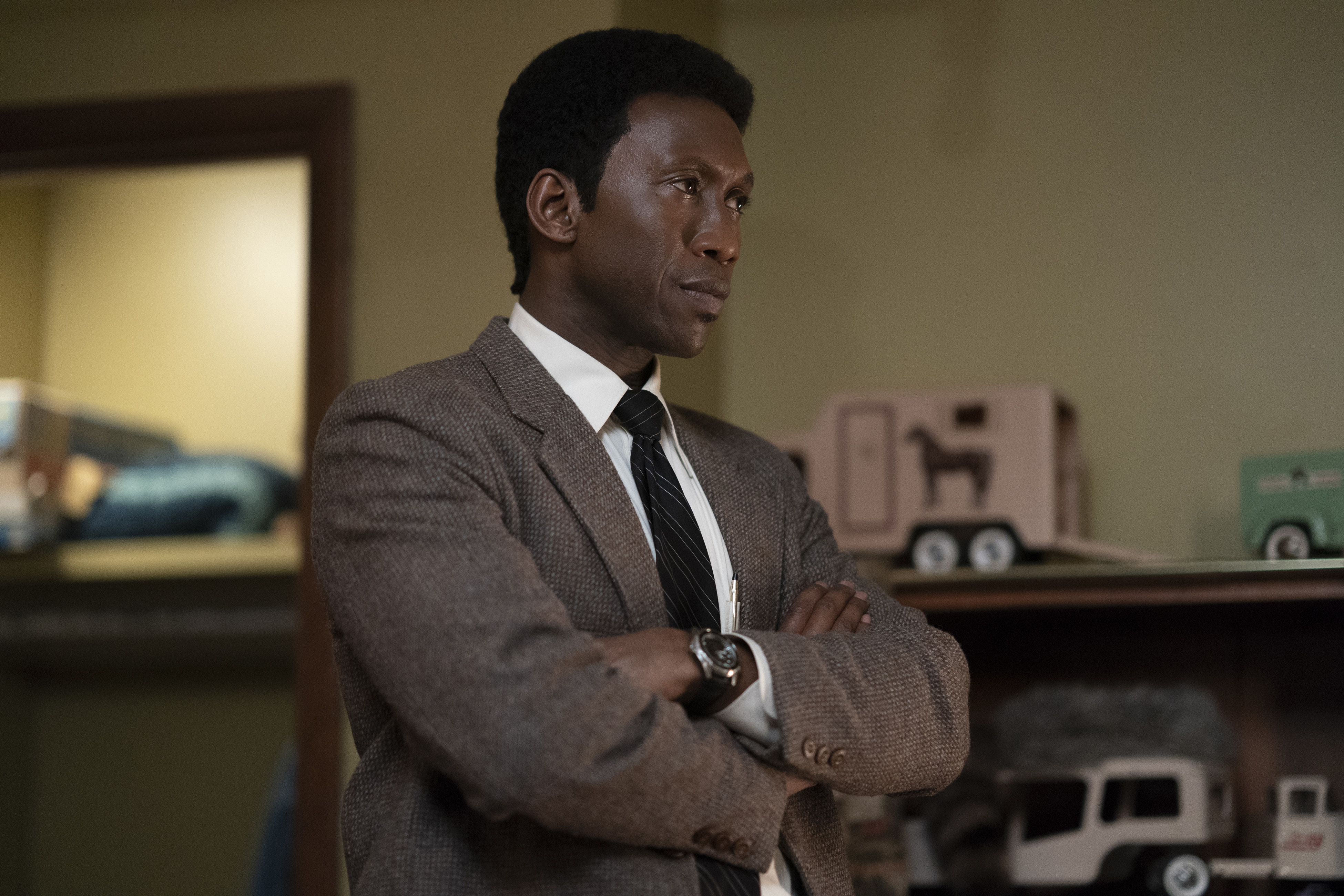 TROMBETTA: From the second week of February — that’s when I came down to Arkansas — and I left the very beginning of September. I was there for quite a long time. It was fun. I really had a great time. I went down there with all these images in my head of dirt roads and I was going to be in a little shack somewhere in the middle of nowhere trying to keep myself from running into mountain men and all that kind of thing, and instead it’s a college town — Fayetteville. When I got there it was great. Lots of really nice restaurants. There was this bookstore that was a city block long — an old used bookstore — very sophisticated and they had two theaters — one theater was playing Beautiful, The Carole King Musical and the other theater was playing an anti-Vietnam War thing, so my idea of Arkansas had to radically change when I got there. There was a nice house where the entire post-production offices were set up in the basement. And I had a really nice room on the first floor and my assistant had another room right next to me and that’s where we worked. And I slept upstairs and they had a guest house in the back for my assistant.
TROMBETTA: From the second week of February — that’s when I came down to Arkansas — and I left the very beginning of September. I was there for quite a long time. It was fun. I really had a great time. I went down there with all these images in my head of dirt roads and I was going to be in a little shack somewhere in the middle of nowhere trying to keep myself from running into mountain men and all that kind of thing, and instead it’s a college town — Fayetteville. When I got there it was great. Lots of really nice restaurants. There was this bookstore that was a city block long — an old used bookstore — very sophisticated and they had two theaters — one theater was playing Beautiful, The Carole King Musical and the other theater was playing an anti-Vietnam War thing, so my idea of Arkansas had to radically change when I got there. There was a nice house where the entire post-production offices were set up in the basement. And I had a really nice room on the first floor and my assistant had another room right next to me and that’s where we worked. And I slept upstairs and they had a guest house in the back for my assistant.
HULLFISH: Yeah I’ve done that where I’ve been housed in the same house where the cutting room is.
TROMBETTA: I prefer that whenever that can happen because you feel like it’s less of a 9 to 5, clocking-in kind of job and it just frees you. You can take breaks and know that you can get back to it whenever you want and if you have an idea you can immediately go — for example — I’d be in the shower and have an idea and you can just go downstairs and work on it and you can work in your bathrobe until everybody starts showing up. (laughs) You feel like you’re more of an artist or something rather than a guy who has to clock in. I like it very much.
HULLFISH: Unlike some guy that has to drive an hour and a half on the 405 to get to work.
TROMBETTA: Exactly! Every morning I would get up at 6:00 o’clock and I would go downstairs and put the coffee on and sit there and between 6:30 and 7:00 I’d just go in and start looking at the work I had done the day before and then just start working. I would wait until I heard the first person come in and then I’d go up and shower and get dressed and be presentable.
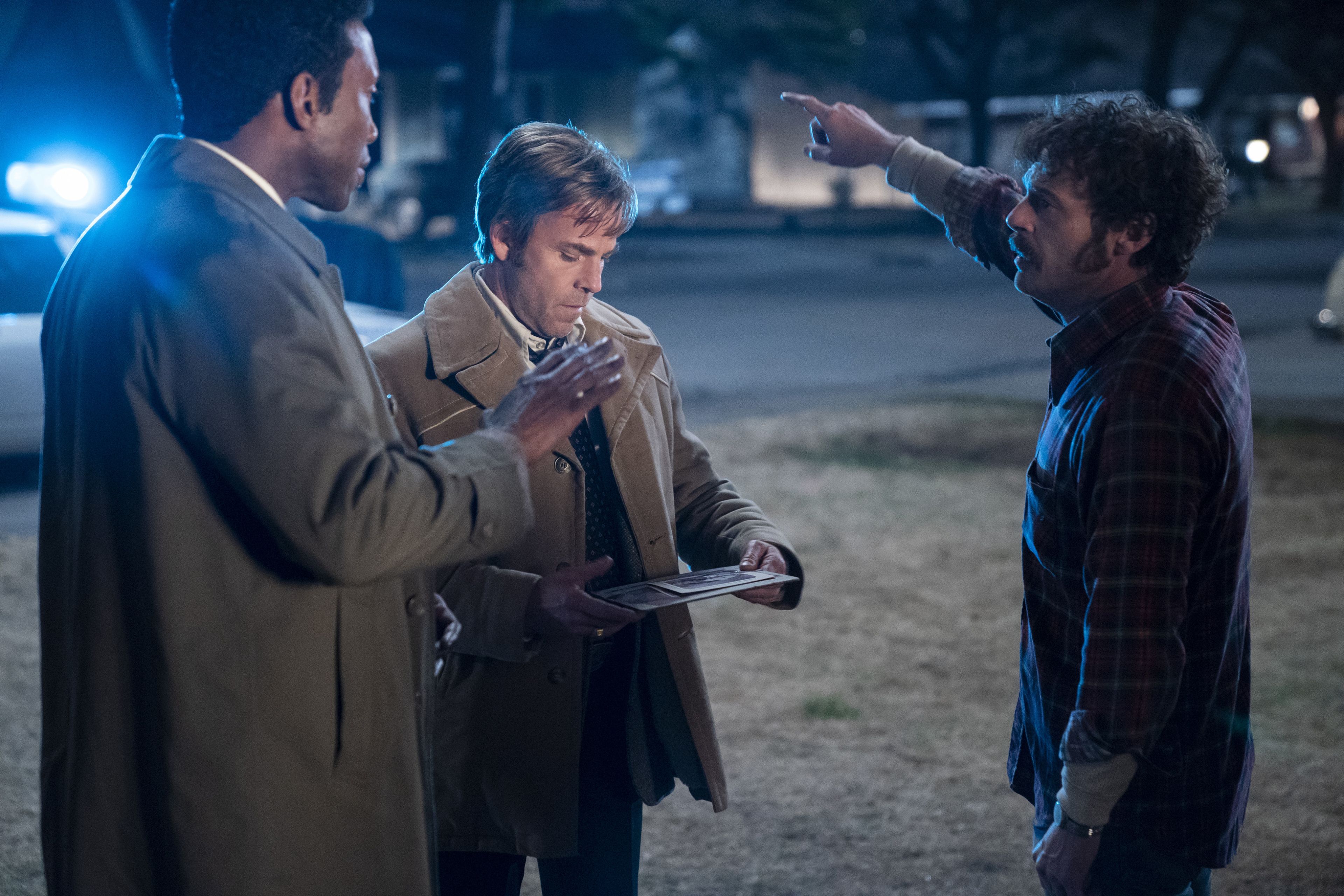 HULLFISH: So when you left in September did you go back to L.A. and how long did that last?
HULLFISH: So when you left in September did you go back to L.A. and how long did that last?
TROMBETTA: Until just the end of December. While we were in Arkansas originally we were scheduled to air — and this was vague, it wasn’t set in stone or anything — but the rumor was we were scheduled to air in March. And so I was adjusting my head accordingly and then somewhere while we were in Arkansas, toward the end of the shoot, we were told that HBO had given us an air date of January 13th and they were going to show the first two episodes on January 13th. So suddenly we had to make some adjustments. There was a week hiatus in August when they moved all of the gear from Arkansas to Hula post in Burbank and so we edited there from early September until the end of December. That’s when it was locked, but meanwhile mixing had been going on and visual effects
HULLFISH: Well let’s talk a little bit about the editing itself. I know you have a background as a sound designer. We talked a little bit about that the last time we talked. Tell me about how that helps you or how important sound design is as you’re trying to build something.
TROMBETTA: I’m not really quite sure how to articulate it except I never would have thought of entering the industry via sound. It was just when I was looking for a job — any job — sound apprentice was the first one that was offered to me and I was happy to be working on anything. It was a television series called The Equalizer way back in the 80s.
For about seven years I moved up and was finally a sound editor. I did Foley. I did a ADR. Dialogue editing, sound effects editing, and then moved up to sound supervisor on a couple of shows. But I think what it really did was allow me not be locked into whatever was on the production track. I often use bits pf dialogue. If I like a reading of a word — the way an actor emphasizes just a particular word and I really like that but I happen to like another take better for whatever the visual content or the way the actor looks in particular — it’s just second to just manipulate the dialogue to get the best performance I can possibly get.
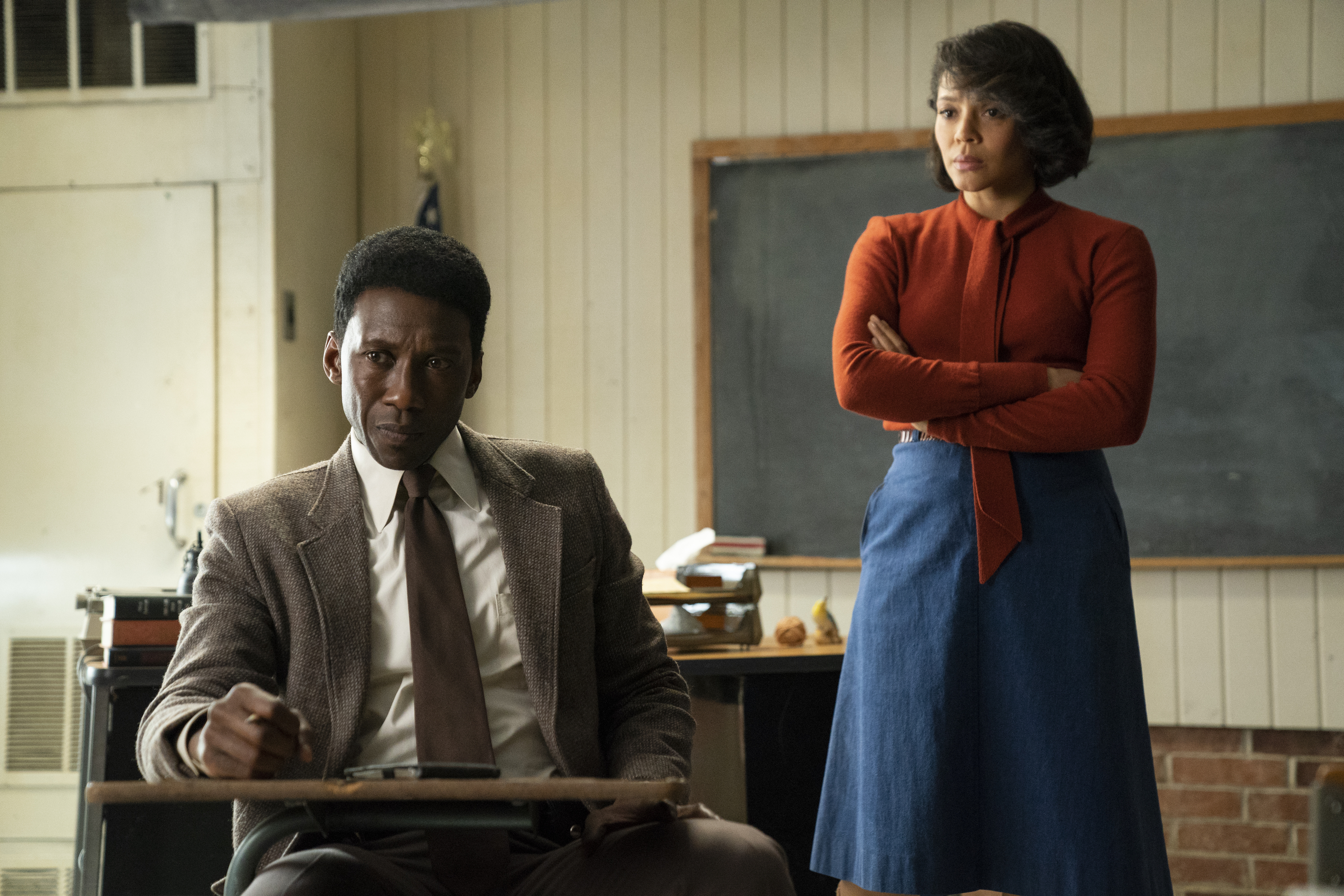 Also there’s a lot of stuff that can happen off screen that just adds to the atmosphere — the ambience of a particular scene and I’m always thinking of just adding things off screen that help tell the story or just help give you more of a sense of the environment — things like that. So I suspect that maybe if I had just gone through picture editing and hadn’t had any experience with sound, I might not approach things the same way. I don’t know if that’s true, but I sometimes think that being a sound editor really expanded my approach when I wrote I’m cutting a scene.
Also there’s a lot of stuff that can happen off screen that just adds to the atmosphere — the ambience of a particular scene and I’m always thinking of just adding things off screen that help tell the story or just help give you more of a sense of the environment — things like that. So I suspect that maybe if I had just gone through picture editing and hadn’t had any experience with sound, I might not approach things the same way. I don’t know if that’s true, but I sometimes think that being a sound editor really expanded my approach when I wrote I’m cutting a scene.
HULLFISH: You mentioned how long you’ve been editing. Tell me a little bit about that transition from film to digital. How did that go and when did that happen?
TROMBETTA: I was one of the last holdouts. I’m not the technically-savvy kind of guy. I sometimes liken it to driving a car. I can drive a car. I’m a pretty good driver, but I have no idea why, when I push the accelerator, it actually moves. I have no idea what makes it work. And I just trust that it does. And it’s the same thing with the Avid. I’m pretty fast and I know how to do everything but I just did it by having someone teach me over and over and over again. And so the first three films that I cut, I did on film — Steenbeck is what I used — all around me, everyone was using Avids and there were other digital systems at the time, but I just was afraid that I wouldn’t to be able to learn it. It was so foreign to me. I was still thinking of cutting — like physically cutting. I remember that there was a job — it was a movie called Going All the Way — and I got the job and they asked me if I knew how to work on an Avid and I said “yes” because I really wanted the job and then I thought, “Oh God I’ve got seven weeks now to learn the Avid.”
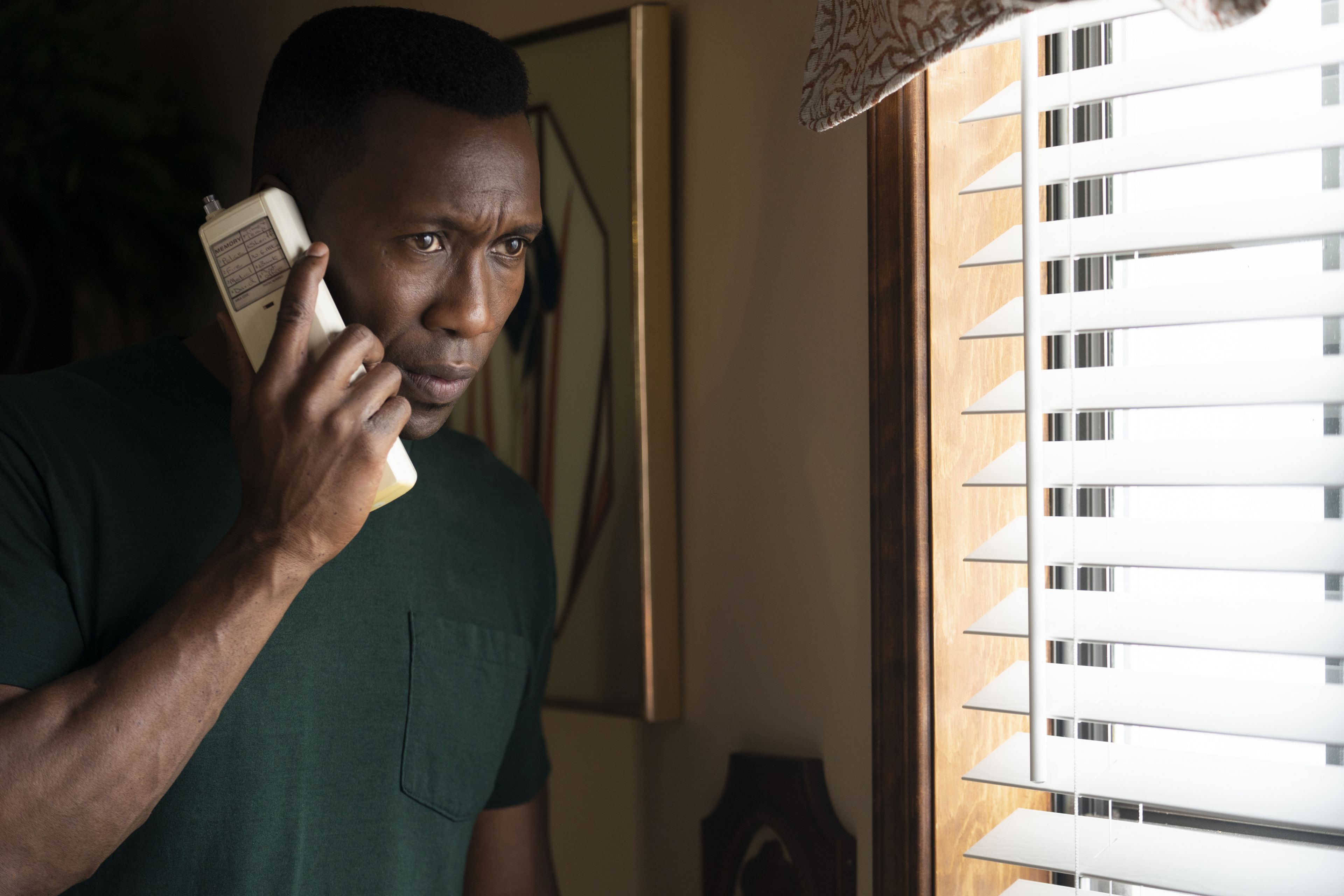 I met a woman who edited commercials and she had an Avid in her home and I asked her to teach me and I said, “It may be frustrating for you because I really have to wrap my head around the whole concept of it.” And I remember the first thing was — when you’re working on film you’re just afraid of making that first cut when you haven’t made anything yet. You’re thinking, “Okay, I’m gonna slice into this workprint, and if it’s not the right frame I’m gonna have to tape it up and find the right frame.” So it’s a real daunting thing to make that first slice into the work print. But with Avid she had to really like bang it into my head that I wasn’t cutting anything. I think it was maybe four weeks where I went to her house two or three nights a week and she just gave me all the basics.
I met a woman who edited commercials and she had an Avid in her home and I asked her to teach me and I said, “It may be frustrating for you because I really have to wrap my head around the whole concept of it.” And I remember the first thing was — when you’re working on film you’re just afraid of making that first cut when you haven’t made anything yet. You’re thinking, “Okay, I’m gonna slice into this workprint, and if it’s not the right frame I’m gonna have to tape it up and find the right frame.” So it’s a real daunting thing to make that first slice into the work print. But with Avid she had to really like bang it into my head that I wasn’t cutting anything. I think it was maybe four weeks where I went to her house two or three nights a week and she just gave me all the basics.
One funny story: after it was all done and everyone was really happy, I had dinner with the producer — Tom Gorai — and he said, “You never worked on an Avid before this job did you?” And I said, “Yeah. That’s true. How did you know?” He said, “Well, when we were in the on-line, there was a shot that was supposed to be in reverse. And in the on-line that shot was going one frame at a time backwards.” I didn’t know that there was a way to run a shot in reverse, so I just figured I had to do it one frame at a time to get it to go backwards. But at least they didn’t find out until the online. So I got caught out finally.
HULLFISH: That is a fantastic story. I love that. Wow. Can you talk about the transitions between scenes in True Detective?
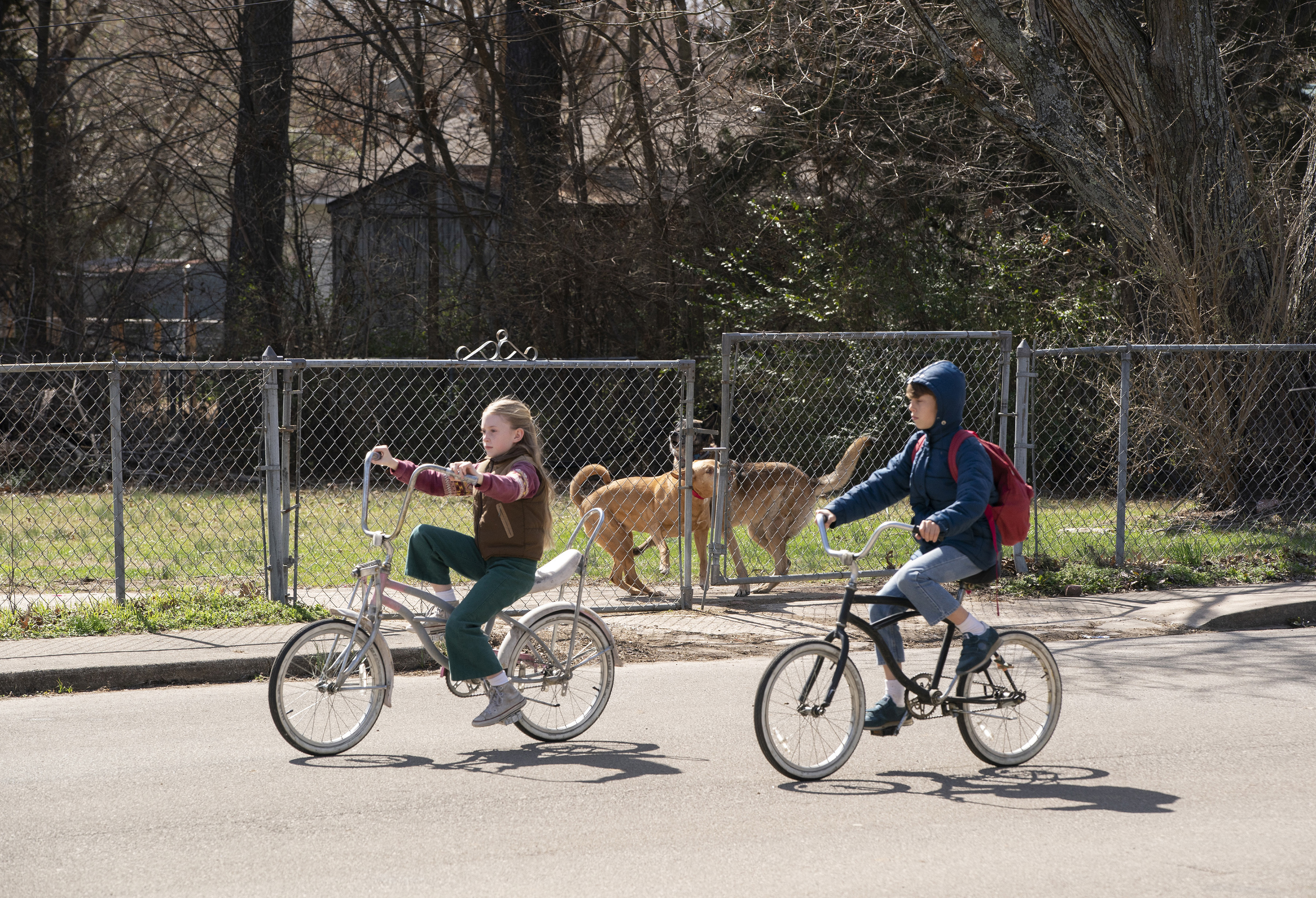 TROMBETTA: Of course it was informed by the script. As far as whether it was going to be a hard cut or whether it was going to be some dialogue pre-lapping or a dissolve, that was where the choices were. All I can say is it was just a feel. For example in the very beginning — a few establishing shots, aerial shots of Arkansas and then it’s the rear wheel of the bicycle that had the baseball card in there. To me, when I heard it, it was just the production track but it had a ticking clock kind of sound to me as that bicycle card was slapping — tick tick tick tick tick — and I presented that to Nick and said, “That would be a nice thing if we transition over to the next shot of Mahersala as Wayne Hays as an old man getting ready for this interview.” And so when we went from his face remembering — it wasn’t so much he was literally remembering the bicycle — but that sound kind of made it easier to sort of see that he was remembering this case that was haunting him and that he was going to be talking about. Originally we had a hard cut to 1990 when he was sitting in the interview room and I just thought, “Well this is the opening and I want to make sure everybody realizes that everything they’re going to be seeing up until the end of episode five was coming from his point of view.” So that’s when a dissolve seemed like a better choice. It gave you more of an impression — at least to me — that he’s now remembering when he was called back into the interview in 1990. But it was really a case-by-case basis whether it felt better to just hard cut to something or whether it felt better to pre-lap a bit of dialogue from the past or the future. There wasn’t any hard-and-fast rule. It was whatever felt like it told the story the best way.
TROMBETTA: Of course it was informed by the script. As far as whether it was going to be a hard cut or whether it was going to be some dialogue pre-lapping or a dissolve, that was where the choices were. All I can say is it was just a feel. For example in the very beginning — a few establishing shots, aerial shots of Arkansas and then it’s the rear wheel of the bicycle that had the baseball card in there. To me, when I heard it, it was just the production track but it had a ticking clock kind of sound to me as that bicycle card was slapping — tick tick tick tick tick — and I presented that to Nick and said, “That would be a nice thing if we transition over to the next shot of Mahersala as Wayne Hays as an old man getting ready for this interview.” And so when we went from his face remembering — it wasn’t so much he was literally remembering the bicycle — but that sound kind of made it easier to sort of see that he was remembering this case that was haunting him and that he was going to be talking about. Originally we had a hard cut to 1990 when he was sitting in the interview room and I just thought, “Well this is the opening and I want to make sure everybody realizes that everything they’re going to be seeing up until the end of episode five was coming from his point of view.” So that’s when a dissolve seemed like a better choice. It gave you more of an impression — at least to me — that he’s now remembering when he was called back into the interview in 1990. But it was really a case-by-case basis whether it felt better to just hard cut to something or whether it felt better to pre-lap a bit of dialogue from the past or the future. There wasn’t any hard-and-fast rule. It was whatever felt like it told the story the best way.
HULLFISH: There’s quite a bit of jumping between time periods. Was all that scripted in that way or were there times when you adjusted the transition point of making that transition?
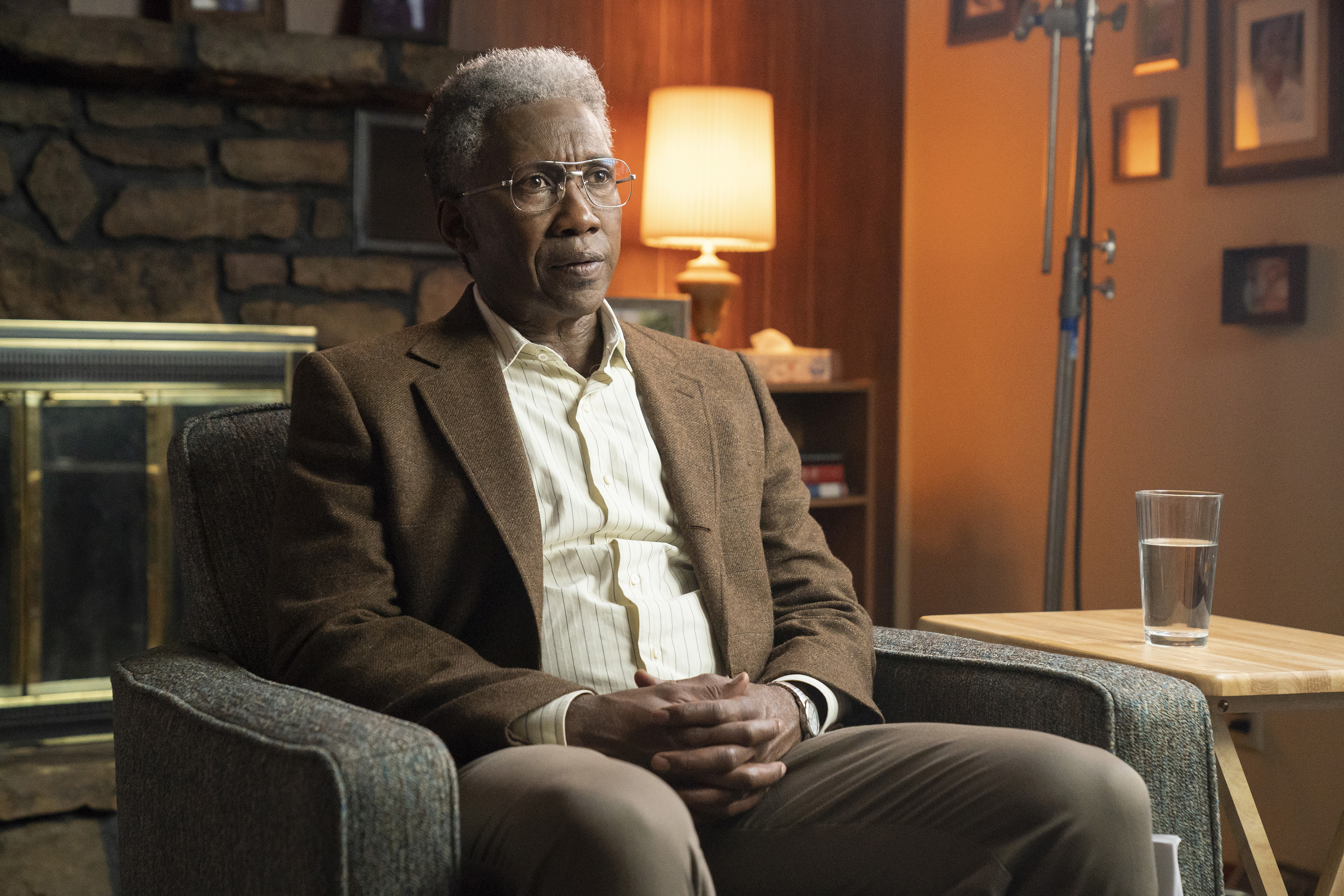 TROMBETTA: There were times when we adjusted the structure. We moved some of the structure around. But to be perfectly honest, I would say 90 percent of it was exactly how it was scripted. Nic Pizzolatto — the creator of the entire series — wrote all of the scripts. Two of them he co-wrote with someone else. He really plays with this concept of time. I was actually looking it up, that there’s this philosophical concept that all time exists at once, and we’re just perceiving it in a linear fashion. I never talked to Nic about this, but I think that’s kind of what he goes after sometimes. Because in True Detective there are many scenes where 1990s Wayne Hays is actually seeing his future self or seeing something — like the scene where he’s sitting in bed with his wife and she’s reading The Jungle Book bedtime story to their children and we see his older self looking at them through the bedroom door and the older self starts pushing the door open and then we cut to 1990s Wayne and he sees the door opening. He doesn’t see his older self but he sees the door opening. That was part of the Nic’s philosophy of how the show was going to be told. We’re constantly ping ponging back and forth.
TROMBETTA: There were times when we adjusted the structure. We moved some of the structure around. But to be perfectly honest, I would say 90 percent of it was exactly how it was scripted. Nic Pizzolatto — the creator of the entire series — wrote all of the scripts. Two of them he co-wrote with someone else. He really plays with this concept of time. I was actually looking it up, that there’s this philosophical concept that all time exists at once, and we’re just perceiving it in a linear fashion. I never talked to Nic about this, but I think that’s kind of what he goes after sometimes. Because in True Detective there are many scenes where 1990s Wayne Hays is actually seeing his future self or seeing something — like the scene where he’s sitting in bed with his wife and she’s reading The Jungle Book bedtime story to their children and we see his older self looking at them through the bedroom door and the older self starts pushing the door open and then we cut to 1990s Wayne and he sees the door opening. He doesn’t see his older self but he sees the door opening. That was part of the Nic’s philosophy of how the show was going to be told. We’re constantly ping ponging back and forth.
At the end of episode five where Wayne talks his partner Roland — when they’re both old men — talks him into you following the clues and solving the case, even though they’re long retired by then. From then on we not only go back and forth in time but we also have a pretty linear concept of following them through to solving the case.
HULLFISH: You mentioned that there were a couple of different instances where the structure did change. Do you remember any of those? Why did you feel the need to change it?
TROMBETTA: That was when we were sitting with Nic during the final pass. I do know that it was in the finale. I knew we had to make some hard choices because of length and there were several scenes that I really really hated losing. They were really important, but they were the kind of scenes that you could remove and it wouldn’t hurt the story although there were character elements and things that were revealed that would have been nice to have in there, but we were we were a little bit long in the finale.
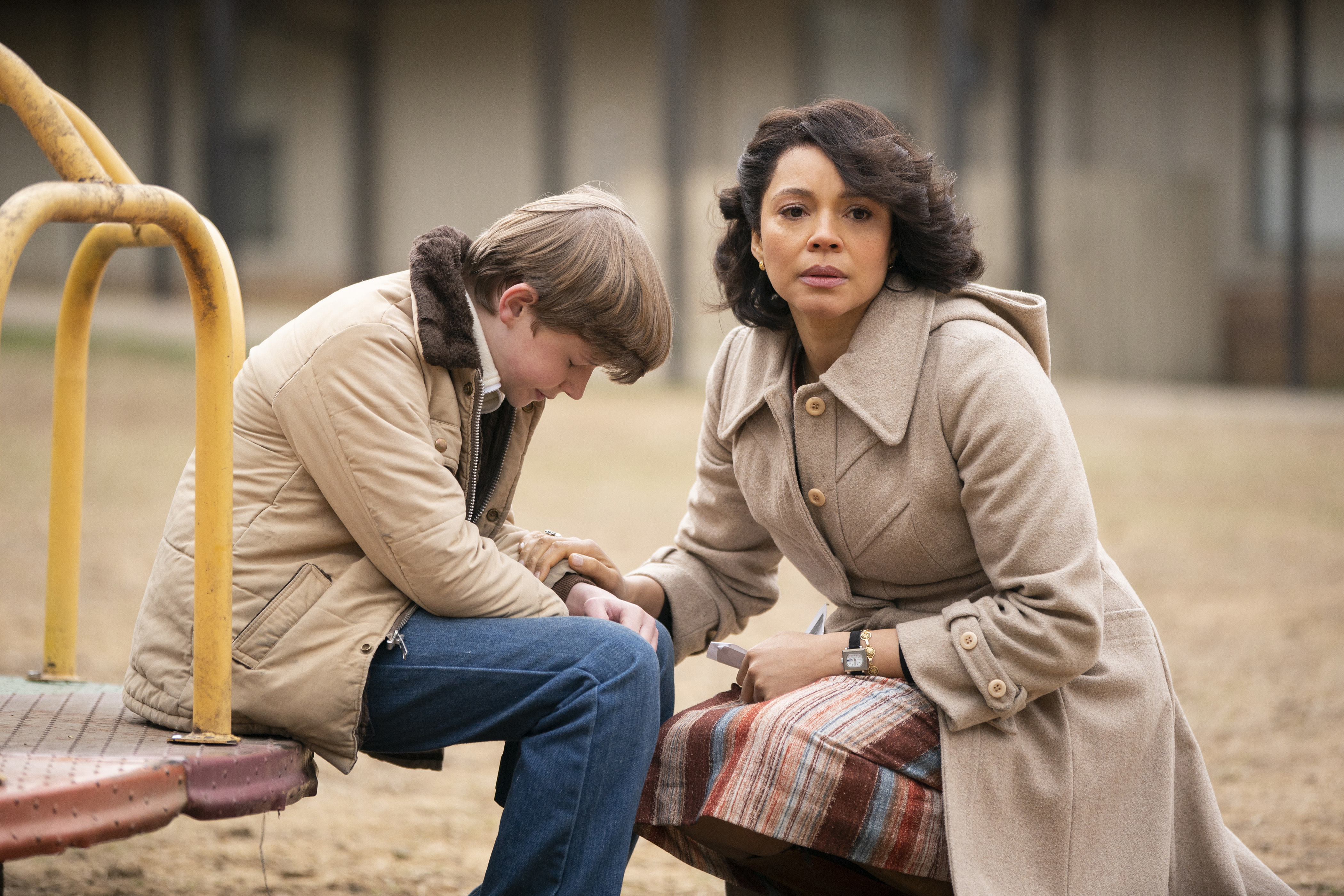 HULLFISH: There were other directors other than Nic?
HULLFISH: There were other directors other than Nic?
TROMBETTA: Nick directed two episodes. Dan Sackheim who had done a number of things for HBO — The Leftovers and Game of Thrones — came in and took over for episode three and then six, seven, and eight. So there were three directors Jeremy Sonnier, Nic and Dan Sackheim.
HULLFISH: The reason why I asked was that you mentioned that the structure didn’t change until you got in with Nic. That’s the difference between film and TV, right? When you’re working with this TV director that is not the showrunner, you’re going to do what he says and probably stick pretty closely to the script, right?
TROMBETTA: Oh yeah. Definitely. In most cases when it’s a show like True Detectives, the entire series is coming from Nic’s head and you don’t want to start messing around with his structure.
You just reminded me of something though. Episode 3 while we were in Arkansas as I was reading the scripts I remember thinking, “Is the audience going to be confused by some of this? And is it a good confusion — like an intriguing confusion? Or is it just confusion and I can’t follow this?” This was early on. Dan had come over to the editing room and we were working together and I remember thinking, “I think if we move this scene over here then we’ll introduce this concept and that way the audience won’t be confused when it comes up later.” And Dan thought that sounded like a good idea and we started moving a couple of scenes around and then we watched it and for some reason it didn’t work as well as when we had it in the script form. And so that was one moment when I realized, “I really have to trust the script. I really have to trust Nic — which sounds obvious. Of course I should. But I thought I was being clever and helping the audience not be lost by shuffling some scenes around and we instantly — when we watched it — it was better the way Nic wrote it. At that point we realized we shouldn’t outsmart ourselves here and just really trust the structure that Nic has created.
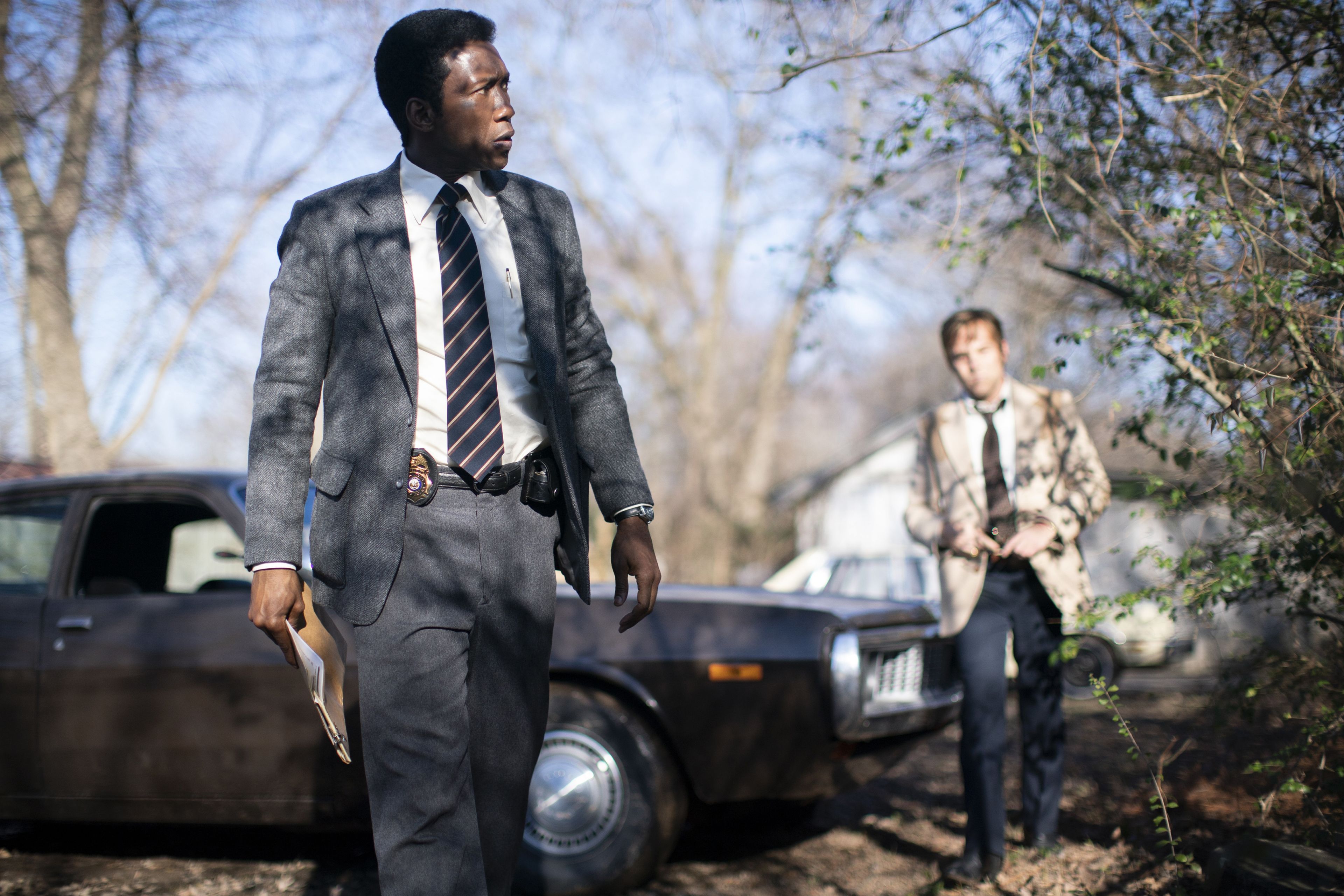 In this series certainly they would talk about things — in episode five for example — they were talking about something they had done and they allude to a killing and we don’t know what that is until Episode 7. And that was the kind of thing that made me think, “Is this going to be off-putting for the audience?” But it turned out not to be. The main thing was that in Nic’s structure, events would be referred to but not set up. They wouldn’t tell you what they were talking about and it’s not going to be revealed for another three or four episodes. But that was the thing that ultimately — when we put it all together — turned out to be really intriguing. And my hat was off to Nic for being able to keep all those plates spinning or balls in the air or whatever cliche you want to use.
In this series certainly they would talk about things — in episode five for example — they were talking about something they had done and they allude to a killing and we don’t know what that is until Episode 7. And that was the kind of thing that made me think, “Is this going to be off-putting for the audience?” But it turned out not to be. The main thing was that in Nic’s structure, events would be referred to but not set up. They wouldn’t tell you what they were talking about and it’s not going to be revealed for another three or four episodes. But that was the thing that ultimately — when we put it all together — turned out to be really intriguing. And my hat was off to Nic for being able to keep all those plates spinning or balls in the air or whatever cliche you want to use.
HULLFISH: Editing is a process. Things are not locked in stone. You can — and should — try something, then maybe realize it didn’t work, and change it back, or try another solution. That attempt is not wasted effort. It’s a process of exploration that needs to be done.
TROMBETTA: Oh absolutely. I have to say that was the great thing about working with Nic. I had never met him before. He was so easy to work with and not at all precious of his work, his words, the dialogue, anything like that. And he really welcomed ideas. Sometimes he’d use them, sometimes he wouldn’t.
I can give you a good example. It was a small scene. It was a school bus driving in the middle of this neighborhood. It stops — and as it was scripted and as they shot it and as I originally put it together — the school bus stops. The doors open. There is a little pause where nobody shows up and then one by one — a little boy first, and then a little girl they come out of their house followed by their parents who are watching them nervously — and finally there are 20 kids from all over that particular neighborhood who climb on the bus and they get seated and you’re on the parents nervously watching them because of the killer that killed the little boy. And then the bus pulls away.
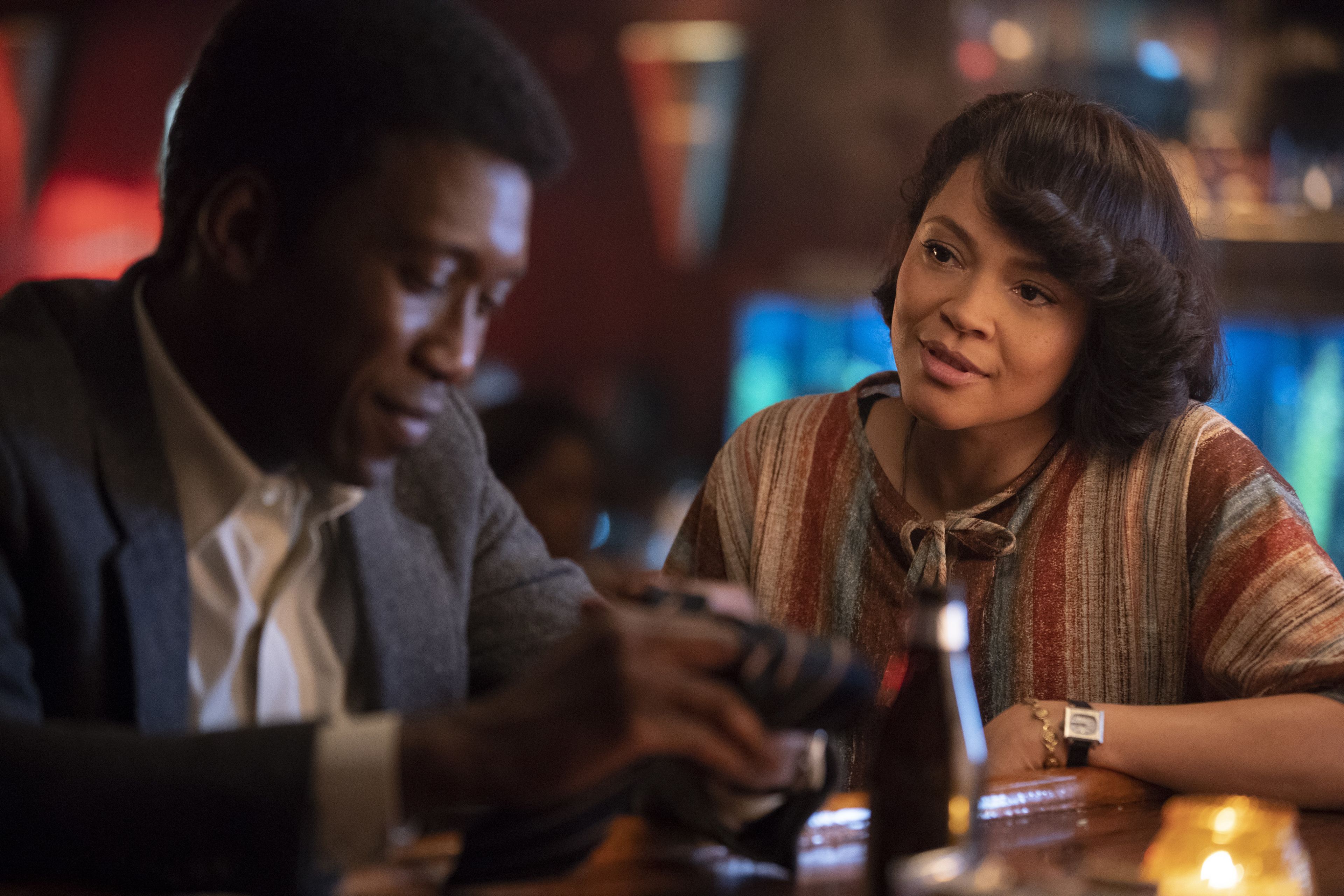 In a lot of cases you get a sense from a director that they don’t want your ideas. It’s not often, but you do sometimes work with directors who don’t want you to step too far out of your lane. But in this case I thought, If you really wanted to show that everyone was frightened to death and were afraid of letting their kids out of their sight — I did a version where the bus pulls up. It stops. Opens its door and nobody comes out. And the bus just hangs there for a few beats and then closes its doors and — empty — just pulls away. And I showed it to Nic and he thought it was great! And that was just such a relief to know that I can try things. I don’t have to worry about offending the director or the director taking it the wrong way — that I’m doing something completely different.
In a lot of cases you get a sense from a director that they don’t want your ideas. It’s not often, but you do sometimes work with directors who don’t want you to step too far out of your lane. But in this case I thought, If you really wanted to show that everyone was frightened to death and were afraid of letting their kids out of their sight — I did a version where the bus pulls up. It stops. Opens its door and nobody comes out. And the bus just hangs there for a few beats and then closes its doors and — empty — just pulls away. And I showed it to Nic and he thought it was great! And that was just such a relief to know that I can try things. I don’t have to worry about offending the director or the director taking it the wrong way — that I’m doing something completely different.
I’m better at showing than telling anyway. I like to show: here’s an alternate version of the scene where you don’t see this or you do see this. Or I move things around. That was one extreme example, but there were examples like that throughout the entire series where I would just say to Nic, “Hey, I did an alternate version of this scene. You wanna look at it?” And he was excited about seeing a different version and he was very confident in what he had written, so if he thought it made it better, it was included, and if he liked it but it wasn’t what he had in mind, he’d just tell me that he preferred it the way he had it. And that was why this job for me was one of the most fun and satisfying jobs as as an editor.
HULLFISH: You mentioned that you had this different version of the school bus pulling up and pulling away. I’m assuming you presented Nic’s version first and THEN presented your version?
TROMBETTA: I don’t think I even presented that idea right away. I don’t think I had that idea initially — while I was cutting the scene. I think it was just something that as I watched the show over and over again. That’s what’s great about directors who leave you the freedom to try things and don’t make you feel that you’re somehow running the risk of offending them if you do something new. One day it just popped into my head — it may be nice if they don’t want their kids to leave the house and no one comes out for the school bus that day. It made the scene tighter. And it said it even more poetically.
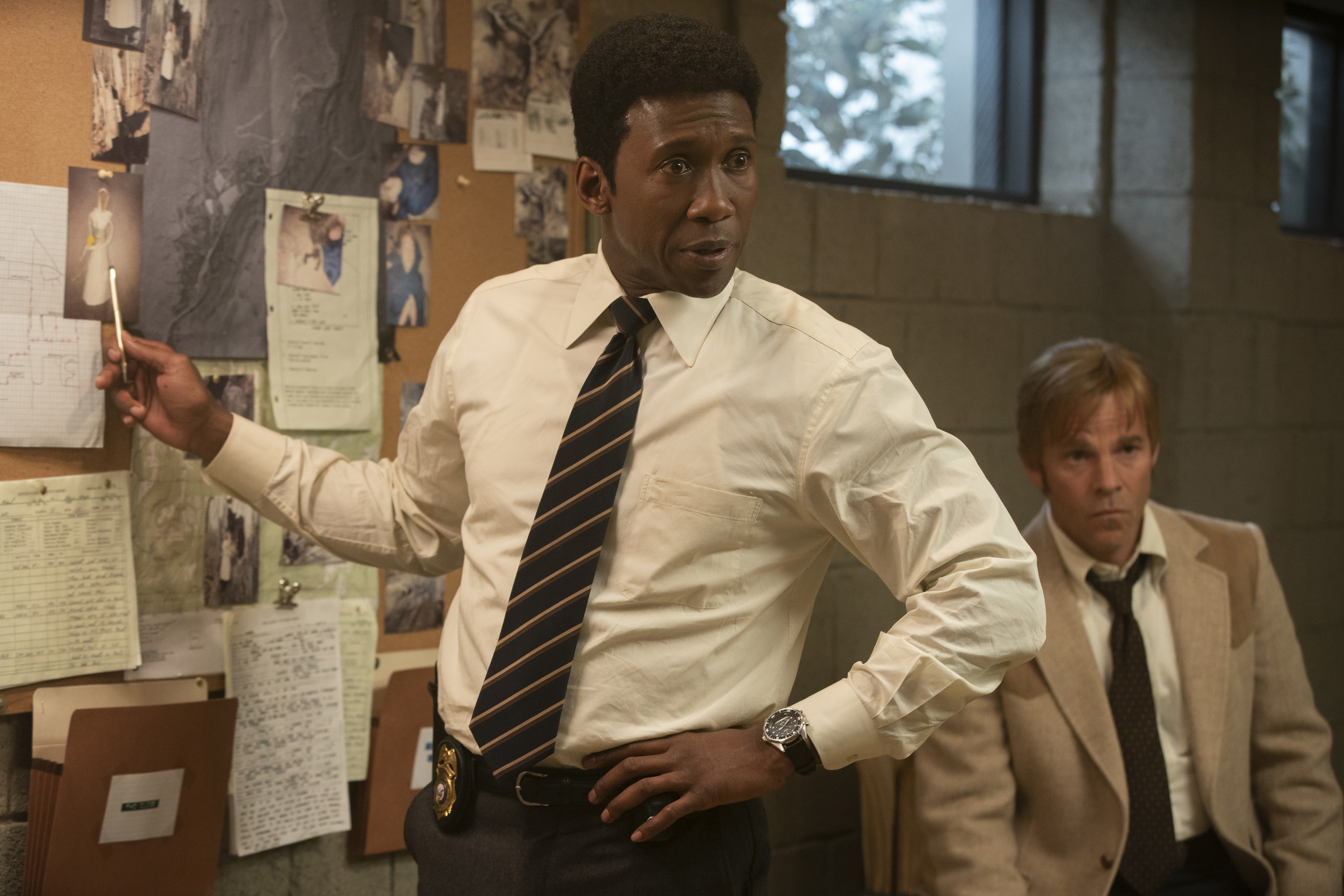 That was the thing about this job that I loved so much is that I could try things and that’s what makes it exciting. You’re not just putting it together exactly as it was scripted. You feel like a writer in some ways. It’s that part of of the editing that I really love. It’s not a cliche, I mean it’s actually true: you’re rewriting the script when you’re in the editing room because once you see what the actors have done and once you see the structure, it’s not just words on paper, but you’re actually experiencing it. Sometimes you feel like, “Why is this not working?” Or “This is too slow.” and it gets your creative juices going to see how we can solve the problem.
That was the thing about this job that I loved so much is that I could try things and that’s what makes it exciting. You’re not just putting it together exactly as it was scripted. You feel like a writer in some ways. It’s that part of of the editing that I really love. It’s not a cliche, I mean it’s actually true: you’re rewriting the script when you’re in the editing room because once you see what the actors have done and once you see the structure, it’s not just words on paper, but you’re actually experiencing it. Sometimes you feel like, “Why is this not working?” Or “This is too slow.” and it gets your creative juices going to see how we can solve the problem.
HULLFISH: When you are looking at dailies — especially since you said that episodes were cross-boarded — so they’re even in a worse chronological order than a normal TV show.
TROMBETTA: And in this case it was even more extreme because there were things that were shot for episode one that weren’t shot until somewhere around episode six or seven. Specifically the old Wayne scenes because it was like a six hour makeup job and you want to keep Mahersala fom having to ping pong back and forth between ages. He did such an amazing job of being a completely different character: the way he walked, the way he talked, his body, his posture. He was brilliant. His 1980 version, his 1990 version of Wayne, and his 2015 version of Wayne were completely different. They were the same person but they had evolved and he really took on the weight of being a 70 year old man. And it was just fascinating to watch but a lot of that material was shot later so that he didn’t have to constantly be ping ponging back and forth between two completely different physicalities.
HULLFISH: Because of that cross-boarding did you have a different method than you normally would — say on a feature film — of trying to put one scene next to another. A lot of editors say, “As soon as I can put scene one next to scene two I put them together.” What about you?
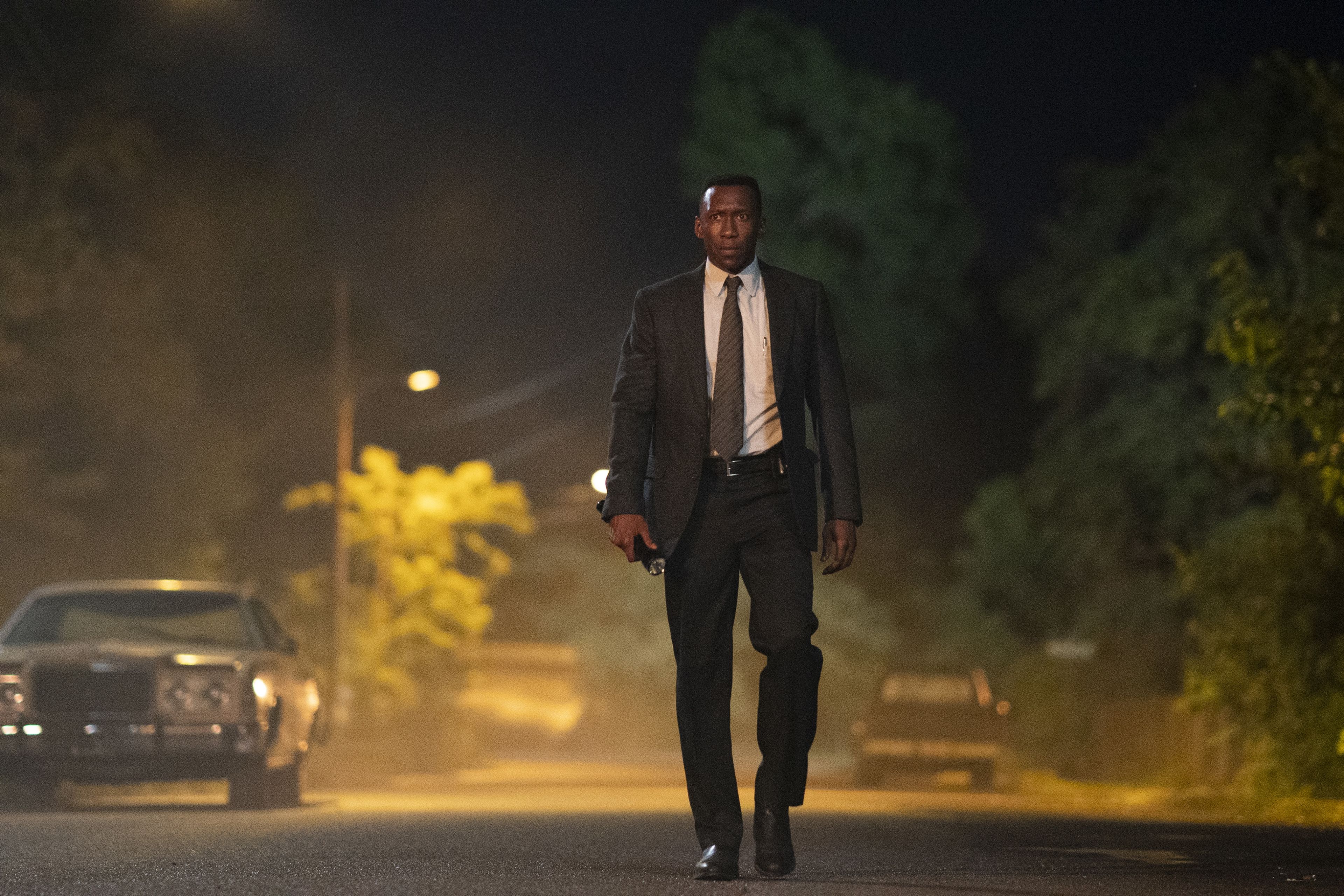 TROMBETTA: I usually put that off for a while. I just have a bin of cut scenes. There’s a point where somewhere around three quarters of the way through or maybe when 80 percent of the scenes are done, then I just have that moment where I’ll start to put them in order and then you see that you have to recut things sometimes because you’re transitioning from a wide shot to a wide shot. Normally you want to have some kind of variety. I usually save that til much later so that I don’t have to keep reworking it over and over and over again. I put off stringing it all together until much much further down the road because then I’ll start adding sound effects and music and all those things and it’s not until I have a whole lot of scenes to work with it that it works for me.
TROMBETTA: I usually put that off for a while. I just have a bin of cut scenes. There’s a point where somewhere around three quarters of the way through or maybe when 80 percent of the scenes are done, then I just have that moment where I’ll start to put them in order and then you see that you have to recut things sometimes because you’re transitioning from a wide shot to a wide shot. Normally you want to have some kind of variety. I usually save that til much later so that I don’t have to keep reworking it over and over and over again. I put off stringing it all together until much much further down the road because then I’ll start adding sound effects and music and all those things and it’s not until I have a whole lot of scenes to work with it that it works for me.
I get a chance to see it as close to a completed version as I can. Of course there are always little “scene missing” kind of things that are in there.
HULLFISH: Everybody’s got a different methodology.
TROMBETTA: A lot of what I do is just instinctive. I don’t have a scientific approach or mathematical approach or anything like that. I just try to get into a zone. I don’t like to have interruptions if I can help it. For example I really throw people that work with me because I don’t eat lunch when I’m working. Not that I don’t have a little snack here in there and I take a break now and then just clear my head or try to figure out a problem, but once I start working I really like to just stay in the room working and have as few interruptions as possible so that my subconscious can start figuring things out for me.
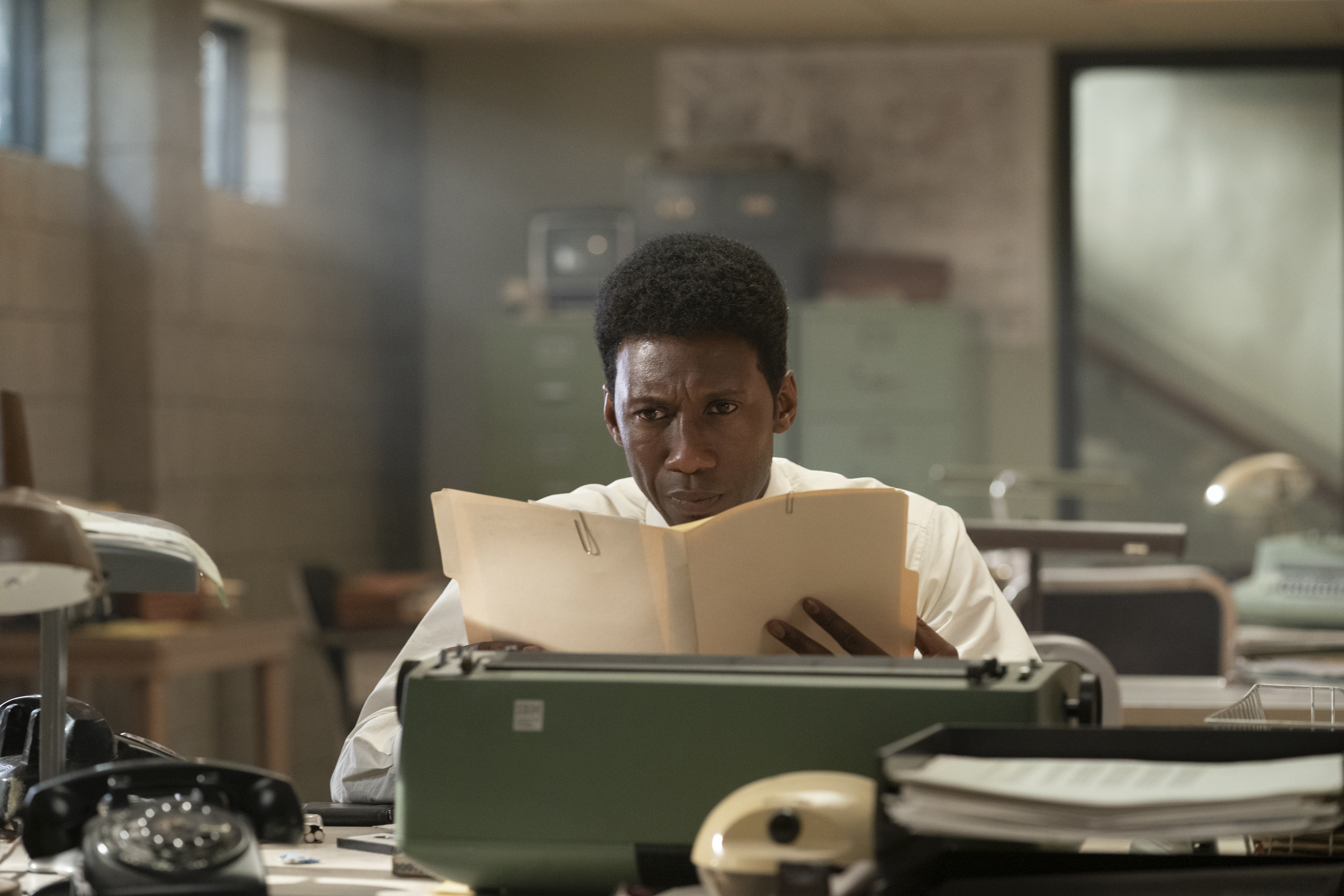 I’ll open up a bin and I’ll see what angles the director has given me and then — reading the script and seeing what the intent is of the scene — I just start putting it together as if I was the director or a storyboard artist or something. Like, “I think it’d be nice if we start tight on this.” Sometimes it’s clear where the director wants you to begin or what his or her idea of where where to begin is but sometimes you have choices and then I just start going shot by shot by shot. It’s just whatever feels right and then I’m constantly making adjustments and painting myself into a corner and going back and doing things a little differently. That’s what is kind of fun — just staying in that moment where you’re not totally consciously making a decision.
I’ll open up a bin and I’ll see what angles the director has given me and then — reading the script and seeing what the intent is of the scene — I just start putting it together as if I was the director or a storyboard artist or something. Like, “I think it’d be nice if we start tight on this.” Sometimes it’s clear where the director wants you to begin or what his or her idea of where where to begin is but sometimes you have choices and then I just start going shot by shot by shot. It’s just whatever feels right and then I’m constantly making adjustments and painting myself into a corner and going back and doing things a little differently. That’s what is kind of fun — just staying in that moment where you’re not totally consciously making a decision.
HULLFISH: I’m trying to figure out whether you’re watching all of the dailies before you do that or are you literally looking at the coverage choices and going in order from the shot you want to start on till the end?
TROMBETTA: Going back to the Steenbeck, when you wanted to cut to a close up you had to take the reel of wideshots that you were looking at, go to the bin or go to the box and put it up and try to find it. I like to get a sense of the scene, so I’ll watch a few of the takes, but sometimes you’ll get four hours of dailies. I don’t know how I could possibly watch four hours of dailies, take notes and then remember where anything was. So it’s easier for me to watch some of the dailies just to get a sense of of the blocking and the scene and then just go from take to take. With a click of a mouse I can see every version of that line.
I don’t do this, but I know some editors have their assistants cut every line from every take so that they can just watch them. I just do it by clicking back and forth between the different takes and I just find the the version that I like — the one that resonates with me. I’m just constantly moving back and back and forth between all of the different angles and checking out all the different takes.
I remember thinking early on, I’ve heard too many people talk about watching all the dailies and I thought well maybe I should do that and it just didn’t work for me because my brain just started getting confused. I just had a whole bunch of notes. It didn’t work for me. It wasn’t a good way for me to operate.
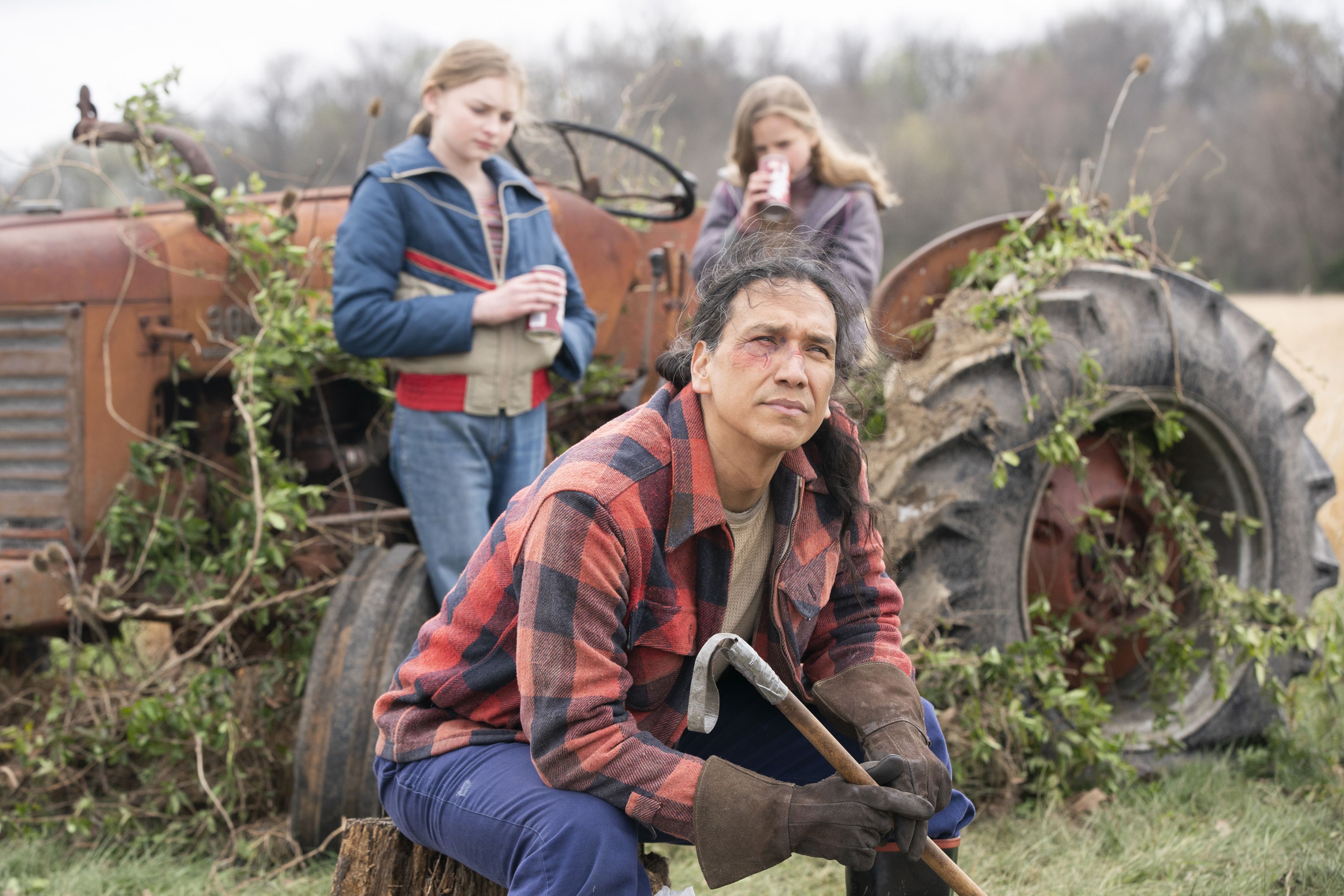 HULLFISH: But before you start actually choosing the first shot that you describe, how much of the dailies do you like to watch? One take of every setup?
HULLFISH: But before you start actually choosing the first shot that you describe, how much of the dailies do you like to watch? One take of every setup?
TROMBETTA: I would say it varies. I ask my assistant to put locators if there are restarts in the scene or if there is a change in camera position, just so that I’m aware of every take in every setup. I watch it through just to just to familiarize myself again — just to kind of wallow in the scene and get used to what the scene is and what the rhythms are and try to get a sense of how the director sees it, because you can often tell from what the angles are what the setups are and how the camera moves what the director intends, and I try to intuit that from the dailies and of course by looking at the script notes. I always go by the script supervisors notes but a lot of times it’s just putting all this material into my subconscious brain. Then you present it to the director and they like it or they have their own takes. There were moments I remember where Dan Sackheim, for example, would say, “My intention was really to start with this take here.” And I would say, “Oh, I didn’t see that. That’s nice.”
HULLFISH: So that takes some maturity: to not be insulted by that. Not to feel embarrassed that you didn’t think of it.
TROMBETTA: It’s rare, but sometimes you’re just on a show where you know that you’re not in sync with the director or the showrunner. There have been shows where I just think my version of the scenes was so much better, but I would say that eighty-five, ninety percent of the time it’s always better after the director comes in or th showrunner comes in because I’m just trying to interpret the scene and also the intention of the director. And things move so fast now that you really don’t have time to sit with the director and ask him about these things because they’ve got a long shooting day. They want to try to make their days. And then they’re working on the next day’s shoot. There are times when it’s like, “Oh my God! That’s such an better way of starting this than I did.”.
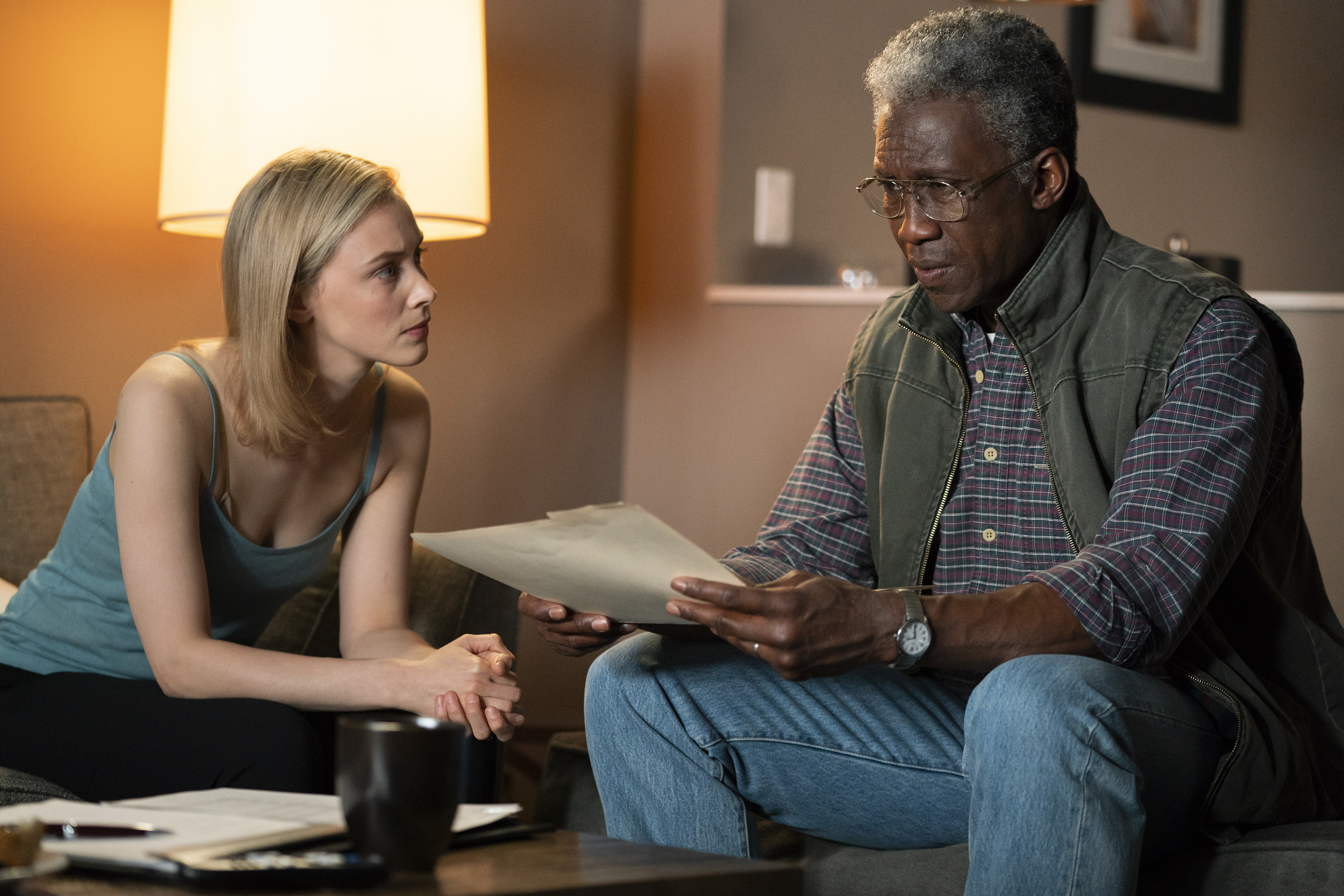 HULLFISH: But not to be defensive about that is what I’m saying. I think a young editor — I can think of myself early on in my career — where somebody would say that and I feel embarrassed or I would get defensive about it, when what we should really do is to be positive about the potential of the note.
HULLFISH: But not to be defensive about that is what I’m saying. I think a young editor — I can think of myself early on in my career — where somebody would say that and I feel embarrassed or I would get defensive about it, when what we should really do is to be positive about the potential of the note.
TROMBETTA: I think also it all depends on who’s saying it to you and the intent in which they say it to you. I’ve worked with directors — and it’s almost always first time directors — who feel somehow a director has to be this kind of auteur — “I know it all!” When you feel you’re being insulted by them saying you didn’t do something right that’s a different story. I have a thin skin when it comes to that sort of thing. I’m not a whipping boy. I really don’t like being insulted. But in most cases, when you really have a nice, friendly, trusting relationship with the director then I’m all ears when it comes to how they had intended something to go and I’m perfectly happy to make it better. And if I don’t think it is better, then I’ll keep showing my earlier version and say, “You know, here’s the reason I think this works better.”
I did that, I remember, on True Detective. Speak now or forever hold your peace: “I know we’re almost ready to lock but I just can’t help thinking that I like my version better and let me pitch it one more time to you and tell you why I think this is better. And if you say no then I can sleep now knowing that I did my best and I tried and we just saw things differently.” And that happens sometimes because it’s subjective. All of this is subjective. There’s not one way of editing a film or one way of directing a film or shooting a film. There’s so many different ways and that’s where the personalities come in. Certainly you get the sense of Nic’s personality through there and I like to flatter myself that I have a certain personality in the way I approach scenes. I think every editor does. I think every good editor is responding to the dailies in his or her own way and putting it together the way they think the scene is best told. And sometimes that aligns with the director or the show runner, and sometimes it’s just a different way of seeing it. Some people like to stay in the master for a longer time than I would feel comfortable with in certain scenes and that’s just their particular style. They don’t like to focus on something with with a cut. They like to let the blocking and everything handle itself and really they just covered themselves but they had no intention of ever using the shots.
And that’s another thing: you look at the setups and you don’t know whether sometimes a director was just covering his ass. It’s happened to me a few times where the director never intended to use the coverage. And I would think, “Well why did you shoot it seven times?” Sometimes they just cover themselves because you never know. And and that’s the difference between television and and a lot of films is because — for a television director, the worst thing I think that they can feel is that a producer asked for something and they didn’t shoot it. “Do you not have a close up of that notepad? When he puts the gun down you don’t have a shot of the gun being laid on the table?” So a lot of times to avoid that awkward situation they shoot things that they don’t have any intention themselves of using. It’s only in case somebody asks for it.
HULLFISH: Since you’ve got a background in sound, I would love to ask you about the value to the production of having the editor in the mix. What do you do in the mix? What purpose do you serve?
TROMBETTA: I think it’s critical and it’s a shame that a lot of times in television the editor is not invited to the mix. I wasn’t in the mix for the actual mixing, but when they have a playback I’m invited. I have never ever ever gone into a mix when I haven’t detected a dropped line — maybe an off-camera line.
In the old film Steenbeck days you had cue sheets and they saw every track and what was on every track. And so it was easier for them to see: “Oh there’s an off-camera line here. I didn’t see that.” But now that they’re working in a different way, every single time — I mean it happened in True Detective as well — where there’s a line from someone who’s not directly on camera, so you don’t notice that there’s a piece of a line or an entire line that’s important that had been dropped. So if for no other reason, an editor is important to be there because nobody knows the tracks like you do.
The other thing is I can tell when they’ve switched takes on me and sometimes they do that — not for malicious reasons — but the sound editor will say, “This sounds a little bit off mic and so I’m going to find an alternate reading” and it may be an inferior reading but they just think technically it sounds better and the mixer doesn’t know that that’s not the original reading of the line. Mainly for me, most importantly it’s for catching things like that. Everything from the volume to the way transitions are done or to the backgrounds and things like that and I know that I have lots of particular notes about things like, “It’s important that we hear this word in this line. It’s important that this word really pops.” It’s critical that I have a chance to at least voice my feelings about the way it was mixed.
There was a show I worked on called Wayward Pines and there was a scene where a shotgun went off next to somebody’s head and what I had done was put this kind of tinnitus sound through it. I had muffled all of the dialogue and all of the effects and everything so that you just heard this tinnitus sound and everything else was sounded as if it was underwater. And when I went to the mix, they had not done it. All of the sound was clear. They had Foleyed everything and they did have that sound but not the one I had put in there.
The one thing they don’t want to do is remix a scene, so they’ll start to push back a little bit sometimes. I said, “This is not the concept.” I told the concept and I said, “And by the way, that’s not the same sound.” And they tried to gaslight me! They said, “No. It’s the same sound. It just sounds different in the room.” I told them that I knew the sound and it wasn’t the same. It was a bit of a struggle because you don’t want to be the guy who’s holding up the mix at however many hundreds of dollars an hour. But at the same time, you’re protective of your work and you know that it was a much better scene — not only just the way that you had prepared it, but the way everybody had signed off on it.
But in True Detective’s case, we had the best mixers. They were just so good and so receptive — the way we were just talking about the editor and director relationship. It was the same thing.
I didn’t feel funny at all about the most nit picky adjustments I wanted them to make. It was just a dream experience with these guys. They were just the best and it sounded better than I could have hoped. That’s the best situation where you’re working WITH the mixers.
HULLFISH: It’s always great in film when everybody’s trying to plus it and you feel like everyone’s trying to plus it.
TROMBETTA: For some people, they got up on the wrong side of the bed or maybe to them it’s just another gig. I and you know most of the people I work with take what we do really seriously and you only have this one chance. Once they lock it, that’s it. You can’t sit there and watch it on television say “Oh man! I forgot that line was dropped!”
It’s best when everybody really really really cares about making the show as good as they possibly can within the time constraints. But it’s not like a feature mixing schedule. It’s just a couple of days. Two days and one playback day and that’s it.
HULLFISH: Leo, thank you so much for all of your time. It was such a pleasure speaking with you.
TROMBETTA: This was great! And the last time we talked — I still want to make my case for the “editing versus cutting” thing that I said were two different things? The only way I can put it is — I’m sure you’ve seen films that were beautifully cut. The rhythm’s perfect, but they’re like a half hour too long. They’re 20 minutes too long. Now, to me, editing is the writing part. It’s not the technical part.
When we last talked, I knew that I didn’t explain it properly. Maybe it’s just a semantic thing but to me there’s “cutting” which is the technical part. Where do you make the cut? What frame do you cut on? What’s the rhythm — all that kind of stuff. But then there’s the “editing” which is like: “This scene doesn’t have to be this long.” Or “This film doesn’t have to be this long.” Or “This is redundant we’ve already done this.” “Let’s tighten it up.”
Anyway, thank you for letting me explain myself a little more clearly.
HULLFISH: I’m glad you did. That was enlightening.
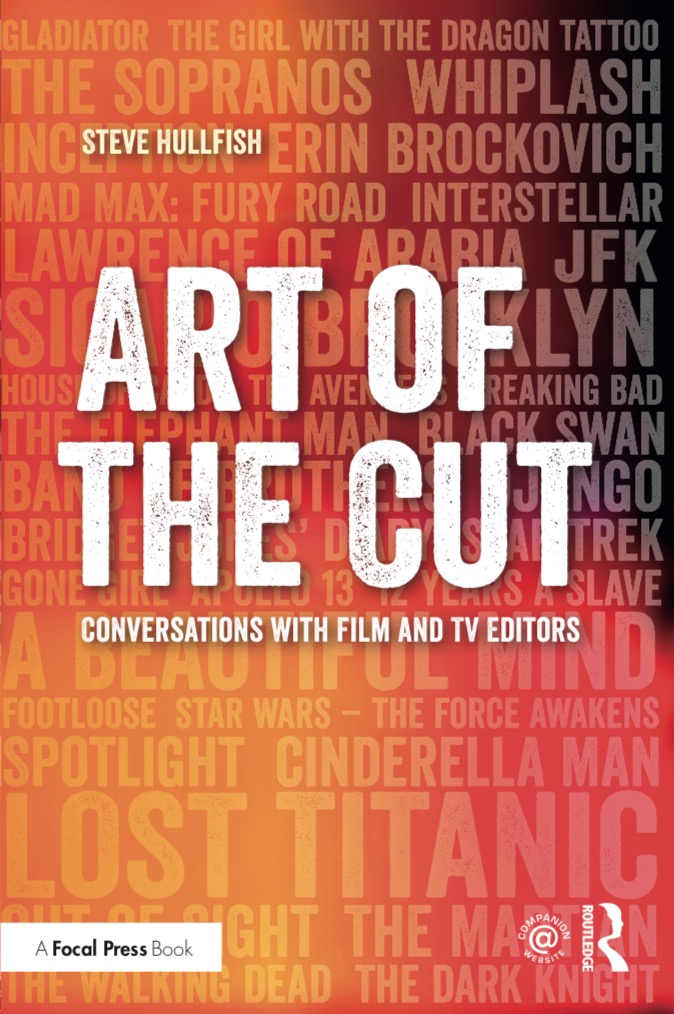
To read more interviews in the Art of the Cut series, check out THIS LINK and follow me on Twitter @stevehullfish or visit imdb.me/hullfish
The first 50 interviews in the series provided the material for the book, “Art of the Cut: Conversations with Film and TV Editors.” This is a unique book that breaks down interviews with many of the world’s best editors and organizes it into a virtual roundtable discussion centering on the topics editors care about. It is a powerful tool for experienced and aspiring editors alike. Cinemontage and CinemaEditor magazine both gave it rave reviews. No other book provides the breadth of opinion and experience. Combined, the editors featured in the book have edited for over 1,000 years on many of the most iconic, critically acclaimed and biggest box office hits in the history of cinema.

Filmtools
Filmmakers go-to destination for pre-production, production & post production equipment!
Shop Now